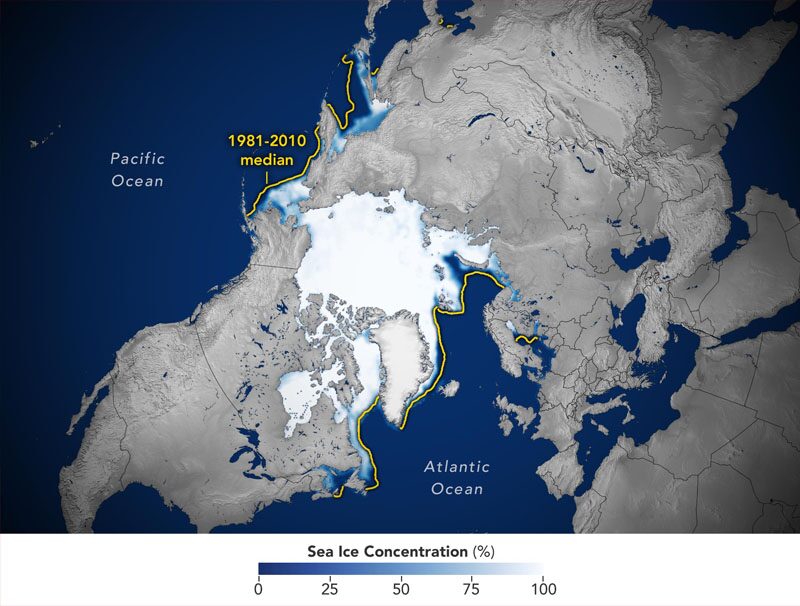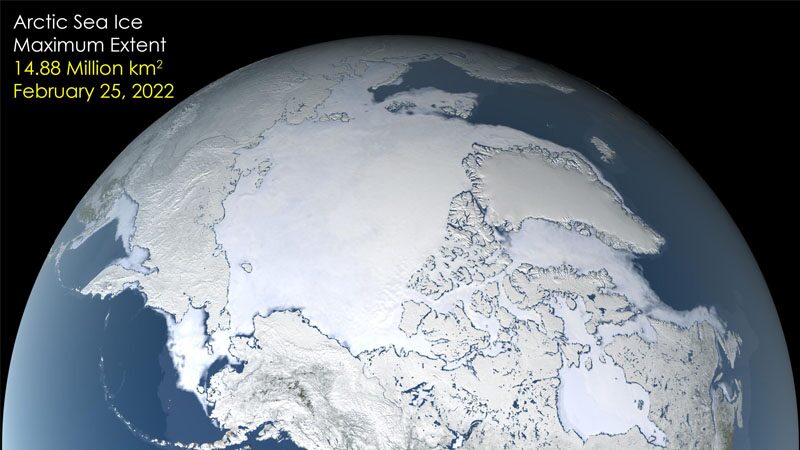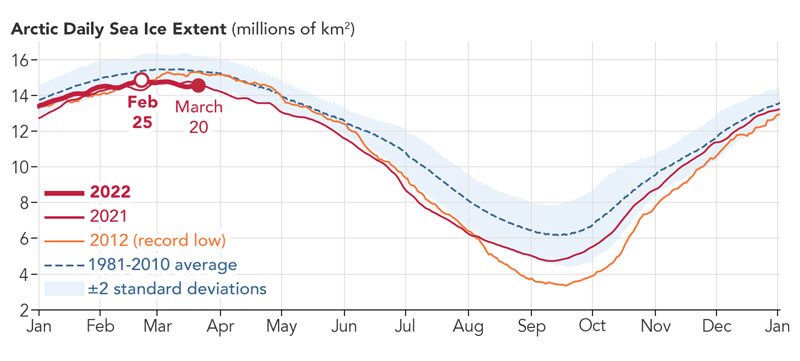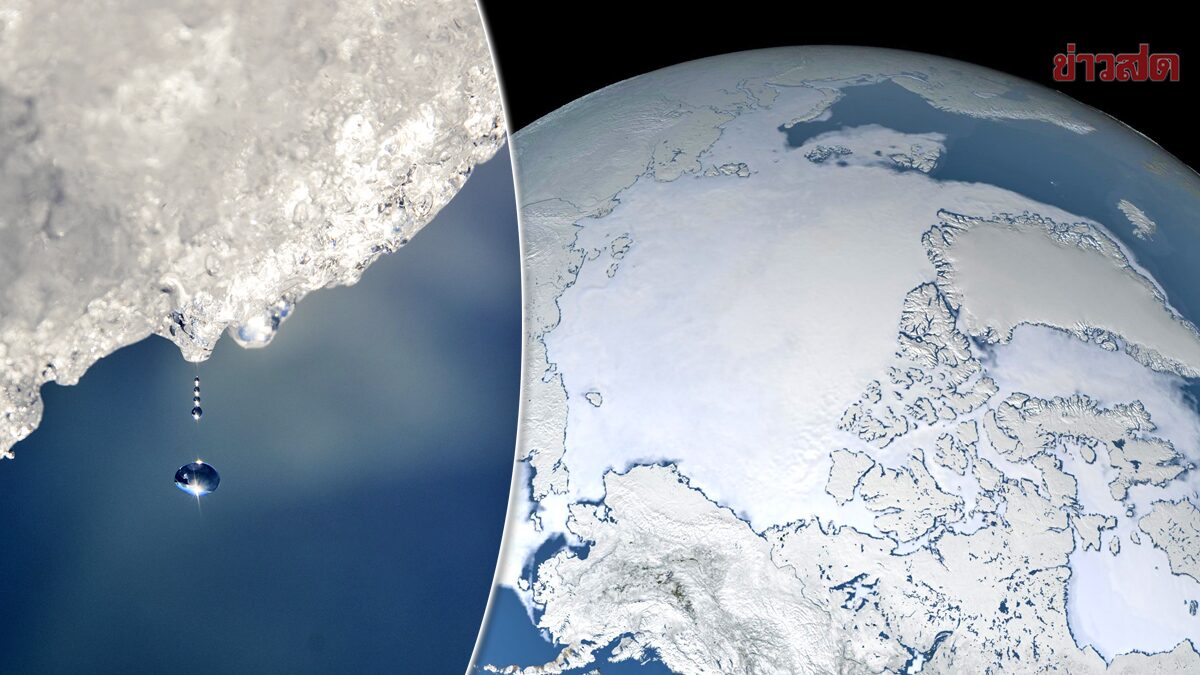นาซาเผย “น้ำแข็งทะเลอาร์กติก” หายไปเกือบเท่าพื้นที่ 2 รัฐในอเมริกา
นาซาเผย “น้ำแข็งทะเลอาร์กติก” – ซินหัว รายงานว่า องค์การบริหารการบินและอวกาศแห่งชาติ (นาซา) เปิดเผยว่าพื้นที่น้ำแข็งทะเลอาร์กติกในฤดูหนาวปี 2565 ลดลงต่ำสุดอยู่ที่อันดับ 10 นับตั้งแต่มีการบันทึกข้อมูล
ศูนย์ข้อมูลหิมะและน้ำแข็งแห่งชาติ (เอ็นเอสไอดีซี) สังกัดองค์การนาซา ระบุว่าน้ำแข็งในทะเลอาร์กติกมีแนวโน้มขยายตัวแตะจุดสูงสุดในปีนี้ที่ราวๆ 14.88 ล้านตารางกิโลเมตร เมื่อวันที่ 25 ก.พ.ที่ผ่านมา

The Arctic winter sea ice in 2022 marks the 10th-lowest on record, NASA revealed on Tuesday. According to NASA’s National Snow and Ice Data Center, Arctic sea ice likely peaked for this year at 14.88 million square kilometers on Feb. 25. /nasa.gov/
ตัวเลขดังกล่าวต่ำกว่าค่าเฉลี่ยสูงสุดระหว่างปี 2524-2553 ประมาณ 7.7 แสนตารางกิโลเมตร โดยเทียบเท่ากับพื้นที่น้ำแข็งที่หายไปซึ่งใหญ่กว่ารัฐเท็กซัสและรัฐเมนของสหรัฐอเมริกา รวมกันเล็กน้อย องค์การนาซาชี้แจงอีกว่านับตั้งแต่กลุ่มดาวเทียมเริ่มติดตามน้ำแข็งในทะเลเมื่อปี 2522 อัตราการขยายตัวสูงสุดของแผ่นน้ำแข็งแถบอาร์กติกลดลงร้อยละ 13 ต่อทศวรรษ
แนวโน้มเหล่านี้เชื่อมโยงกับภาวะโลกร้อนที่เกิดจากกิจกรรมของมนุษย์ เช่น การปล่อยก๊าซคาร์บอนไดออกไซด์ ซึ่งกักเก็บความร้อนในชั้นบรรยากาศและทำให้อุณหภูมิสูงขึ้น ทั้งนี้ การวิเคราะห์ขององค์การนาซาแสดงให้เห็นว่าภูมิภาคอาร์กติกมีอุณหภูมิสูงขึ้นเร็วกว่าภูมิภาคอื่นๆ ราว 3 เท่า

After growing through the fall and winter, sea ice in the Arctic appears to have reached its annual maximum extent. The image above shows the ice extent—defined as the total area in which the ice concentration is at least 15 percent—at its 2022 maximum, which occurred on February 25, tying with 2015 for the third earliest maximum on record. On this day the extent of the Arctic sea ice cover peaked at 14.88 million square kilometers, making it the tenth lowest yearly maximum extent on record. Credit: NASA’s Scientific Visualization Studio

This graph shows Arctic daily sea ice extent in 2022, 2021, and 2012 compared to the 1981-2010 average. This year’s annual maximum extent was reached on February 25. Credit: Joshua Stevens/NASA Earth Observatory














